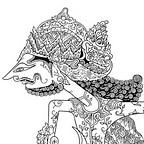The Church of St. Paul the Apostle
A Photo-Essay on the Mother Church of the Paulist Fathers
The Church of St. Paul the Apostle is the mother church of the Missionary Society of Saint Paul the Apostle, commonly known as the Paulist Fathers, the first order of Roman Catholic priests founded in the United States. Since their founding in 1858, the Paulist Fathers have sought to bridge Catholicism with contemporary culture. This union of Catholic faith and American social development has been held as essential for effective ministry and mission.
Not long after the Paulist founding, the Parish of the time outgrew the modest brick edifice that served as the original church. The cornerstone of the present edifice, designed in Late Victorian Gothic Revival style, was laid in January 1876 and officially dedicated in January 1885. The edifice was not yet complete, however, so construction continued after 1885 for interior finishes and the Towers.
Once inside the Church, one immediately finds significant tributes to Father Isaac T. Hecker (1819–88), Founder of the Paulist Fathers, to the right of the Narthex. Among Catholics, Father Hecker is referred to as a Servant of God, a term that indicates his life is being investigated for official recognition by the Pope. It is a technical designation that would be followed by the canonical designations of Venerable (heroism or martyrdom), Blessed (beatification), and Saint (canonization).
Father Hecker was a Catholic convert, baptized in 1844 and ordained in 1849, and was first associated with the Congregation of the Most Holy Redeemer, commonly known as the Redemptorists. His own assertiveness led to being expelled from the Redemptorists, which spurred the founding of the Paulist Fathers with four other former Redemptorist American priests. The fresh orientation and approach developed by Father Hecker brought rejuvenation to not only American Catholic thought, but further influenced French Catholics pursuing revival in the context of the French Third Republic.
The Sanctuary is a stunning blend of stained glass, sculpture, and mosaics, with paint that is far more colorful and striking than typically expected in a Gothic church. To create a lively interior, Father Hecker consciously enlisted prominent American artists, including John LaFarge, Augustus Saint-Gaudens, Stanford White, and William Laurel Harris. Gothic churches typically follow a cruciform design, but the Church does not as it lacks a Transept, so it consists of just the Nave, Aisles, and a projecting High Apse at the rear.
The Aisles of the Church feature numerous, aesthetically distinct Altars that honor the Holy Family and various Saints throughout Catholic history. Furthermore, there are small chambers flanking the Narthex, beneath each of the Towers, that are accessible from the Aisles and side portals. The base of the North Tower is closed, while the base of the South Tower hosts the Adoration Chapel.
The journeys of Father Hecker and the Paulist Fathers are representative of so many religious traditions transformed, for the better, within and because of the American context. Although convenient to frame such transformation as a tension between tradition and change, throughout history tradition has often been served effectively and faithfully because of the embrace of change. The freshness of American opportunity has allowed so many faith communities to overcome inertia and the Paulist Fathers are an exemplar of such initiative.
This photo-essay was originally published on June 26, 2019, featuring photos taken exclusively with a standard zoom lens. Utilizing a wide angle lens acquired later, the new photos presently featured were taken on a single day in October 2019. Acknowledgments and gratitude go to the Paulist Fathers, who graciously shared the original and present iterations via official and personal Twitter accounts.
